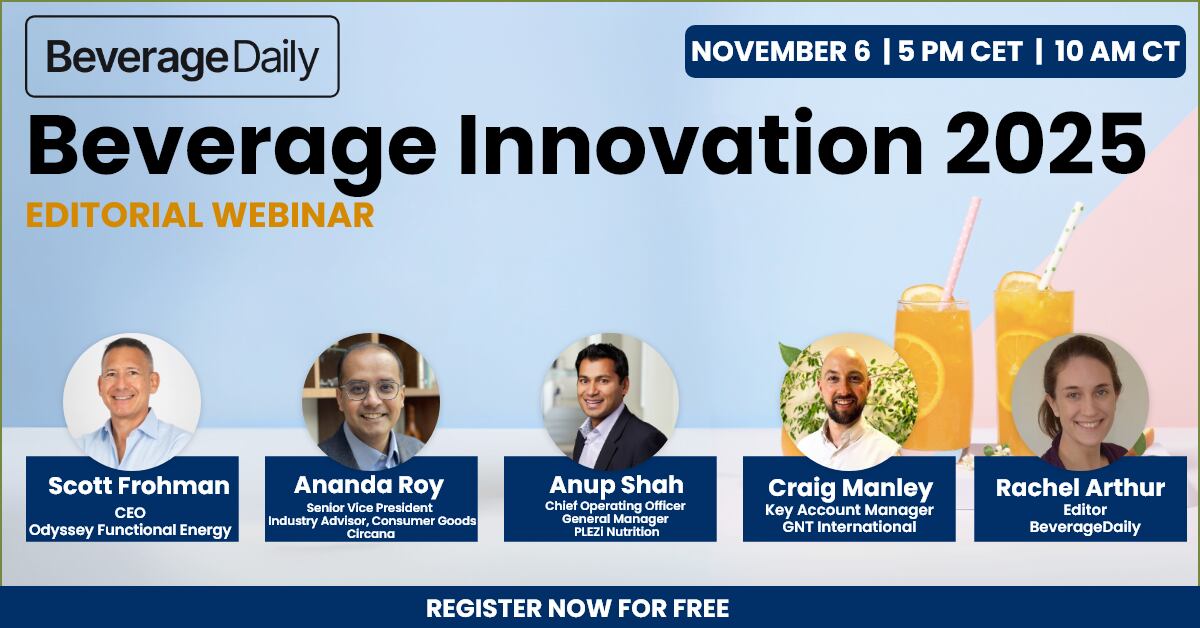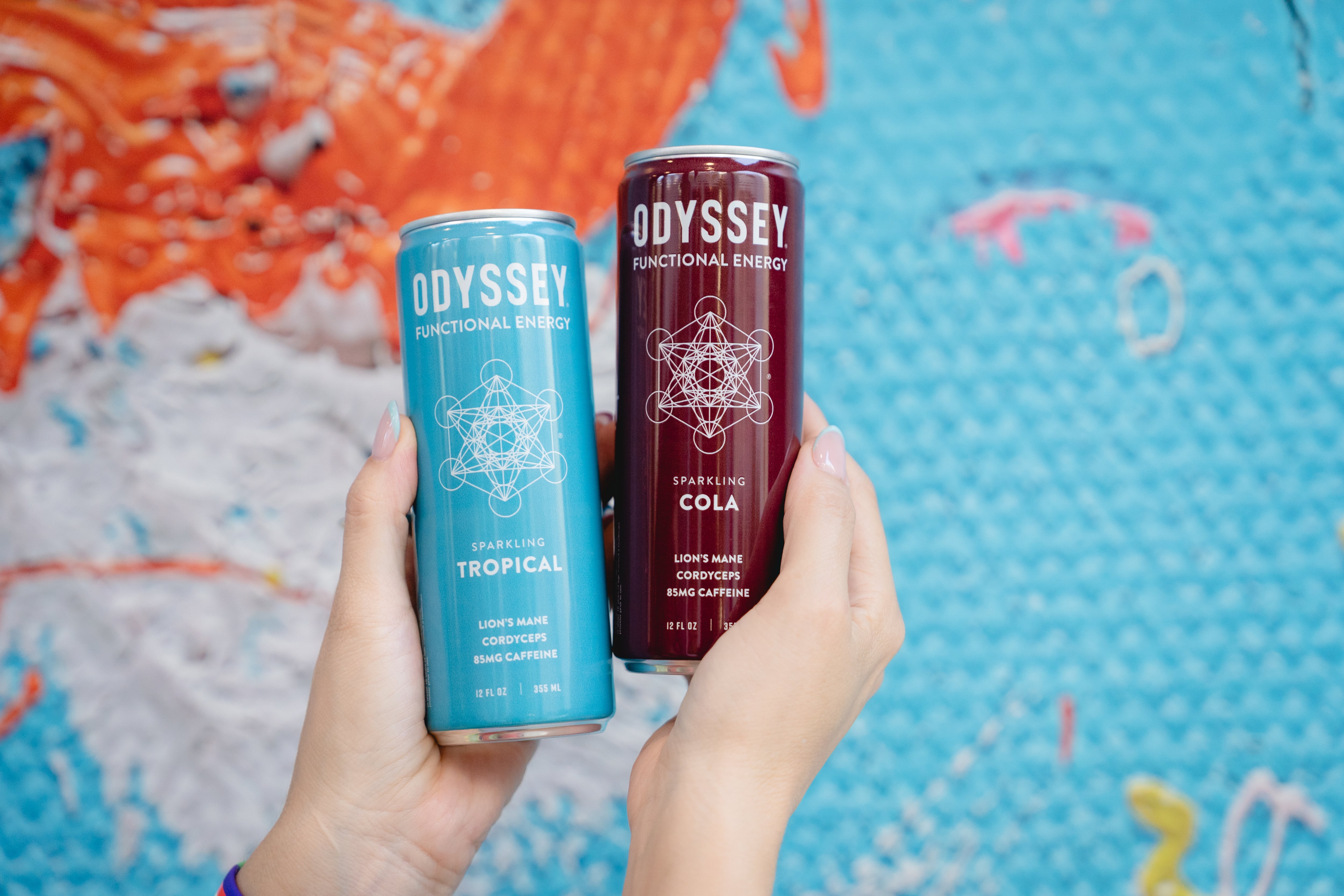That’s because there’s been no half measures – quite literally – in its development: the brand has pushed for maximum potency out of its functional ingredients for sustained energy with the added bonus of cognitive focus; then focused on flavors and branding that drive maximum velocity as it grows across the US.
Added functionality is the future, says the brand, as it eyes up its place in the projected $300bn global energy drink market.
Clean, functional energy
Launched in January 2022, Fort Lauderdale headquartered Odyssey Functional Energy sets out to deliver sustained energy without the crash: while enhancing cognition, focus, clarity and mood.
Odyssey offers 85mg and 222mg caffeine lines across ten flavors: Pineapple Mango, Blue Raspberry, Strawberry Watermelon, Dragon Fruit Lemonade, Blackberry Lemonade, Passion Fruit Orange Guava, and Mandarin Orange, Tropical, Cola and Pink Lemonade.
At the core of the drink’s functional palette is natural, green tea caffeine, which is balanced out with L-theanine to avoid the spike and crash. It comes in two key versions: one with 85mg of caffeine (akin to a cup of coffee) and then a turbocharged version with 222mg caffeine.
Added to that is a proprietary blend of adaptogens and nootropics: such as Lion’s Mane for focus; cordyceps for endurance; and panax ginseng for energy and mood.
The ingredients
The Odyssey Stack: At the core of every Odyssey drink is its proprietary blend of functional ingredients:
- Organic Lion’s Mane (1500mg) – For focus & clarity
- Organic Cordyceps (1250mg) – For endurance & stamina
- Organic Green Tea Caffeine (85mg / 222mg) – For clean energy and alertness
- Panax Ginseng (100mg) – For drive and vitality
- L-Theanine (85mg) – For mood and balance
All products are crafted with real fruit juice, no added sugar, and are Non-GMO, Vegan, Gluten-Free, and Kosher.
Odyssey is also free from high-fructose corn syrup, aspartame, sucralose, taurine, and synthetic preservatives.
“Most energy drinks have caffeine and taurine, and of course artificial sweeteners,” explained founder Scott Frohman. “By and large, most energy drinks spike you up and crash you down. The world we live in today, people want more long-lasting energy.
“And a lot of people like [our] option of choice: a higher caffeine in the morning, less in the afternoon.”

Energy: but not as you know it
The energy drink category is evolving fast. For decades, it was defined by the big energy drink brands: known and defined by their masculine cues and extreme sports positioning.
The last few years have seen the category move towards the concept of ‘clean energy’ or ‘natural energy’: with brands such as Celsius and Alani Nu in the US and Tenzing in the UK.
And brands are increasingly exploring the added functionality they can offer. Energy drinks are already functional by definition: but now brands are thinking about other functionalities that can be incorporated into the drink.
For Odyssey Functional Energy, that’s about cognitive performance and a sharper, more focused mind.
Corporate HQs and retail footprint
Odyssey can be found in the corporate HQs of Odyssey, Shopify, Uber PHX, Morgan Stanley, DHL, Barclays, SpaceX, Uber, Google, Robinhood, Snapchat, Pinterest and more.
Retailers include Target, Kroger, H-E-B, Walmart, Erewhon, Wegmans and more.
But it’s not simply about ingredients and niches. The idea of energy itself has fundamentally changed, says Frohman.
The big, market-dominating energy drinks that have been dominating the market for decades, for example, were founded and built in a very different world.
“30 years ago, energy was about high speed internet coming, cars getting faster, planes getting faster, connectivity, mobile phones, emails, text messages, social media – so much happening so fast," said Frohman.
And people are fed up with that mentality: turning to a different perception of what they want from ‘energy’. And this one is a lot more zen: one where energy is not about spikes and crashes but about better overall wellness.
“Today, people feel they’ve been on that treadmill that’s been going faster and faster,” said Frohman. “The idea of ‘mindfulness’ didn’t exist 30 years ago - or at least, the people who used the word were few and far between. It’s the same with ‘meditation’.
“Today, it’s about being more conscious, more present: people are looking for the next movements – things like functional sodas – and these movements are already here.”
Big ideas and big dreams meet big tech
Frohman, a seasoned entrepreneur, has decades of experience in building and scaling companies across multiple sectors such as tech, wellness and insurance.
And the key to a functional beverage, he says, it to deliver.
“I got together with my formulators and said: Hey, what’s the highest strength we can go so that people can really feel the effect? And that’s why we’re winning in so many big companies – we’re in Uber, Meta, Shopify, Nvidia, SpaceX, Robin Hood – we’re in all these corporate headquarters and people are drinking our drink over all these other energy drinks because they get to work and they want that edge, that sustainability, that clarity to do the things they really want to do."
But on the journey, there have been a lot of learnings. Not only has that come from the formulation of the functional ingredients: but in the brand’s messaging and flavors.
The brand has just launched three new flavors: Tropical, Cola and Pink Lemonade.

As any beverage innovator will emphasize, taste is crucial: but for Frohman it’s been about more than that.
These flavors are the gateway to the functional energy category for most consumers: and so he’s focused on ones with mass appeal. That’s meant adapting and changing according to consumers’ responses along the way: such as with the brand’s experiment with orange ginger.
“A lot of people like orange ginger, but the ginger was polarizing,” said Frohman. “So I said: Let’s switch gears. We can’t just put something out if it’s not going to be wildly well-received, because the velocity has to be high. In order to win, we don’t have the luxury that something can just be ‘ok’. Nothing was allowed to be ‘just ok’. We developed this DNA of making everything absolutely spectacular.”
His top tip, therefore, to other beverage entrepreneurs: “If something’s not 100% perfect, don’t give yourself a hard time about it: but refine, refine and refine it.”



